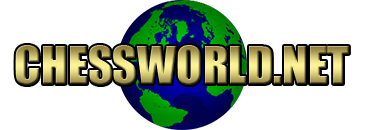The discussion of Sudoku terminology and techniques that follows is restricted to consideration of the classic 9x9 grid partitioned up into 9 3x3 blocks and using the digits 1-9. This is not to say that some of the terminolgy or techniques discussed here might not also apply to some of the other variations of Sudoku, but is only to inform you that all the discussion that follows assumes the classic Sudoku game. Any application of the following to other variations of Sudoku is at your own risk.
Terminology to describe Sudoku techniques is not universally agreed upon, so I am providing a glossary of the terms that I use below. I have drawn on other sources, when possible, to try to conform to terminology already in use. I favor descriptive terms, especially ones that describe how or why the technique works. A good example of that is cross-hatching, which I found in the Wikipedia article on Sudoku. The term cross-hatch is very descriptive of the mechanics of the technique when carried out with pencil and paper. When I do diverge from other sources it is for one or both of the following reasons; the term has not been well established in common use, and/or the term is not very descriptive of how or why the technique works. Some examples of descriptive terms that really don’t describe the technique they name are Swordfish and Jellyfish. The names were probably chosen because the configuration of cells involved in the techniques may have reminded their author of said aquatic life forms, but I don’t see the resemblance. The term X-Wing is a good description of the configuration of cells involved in the technique and while it doesn’t indicate anything about why the technique works it does give a clue as to how to apply it.
- analysis:
- Any technique that eliminates candidates. Techniques of
analysis do ultimately lead to solutions for cells, but it may
take the application of multiple techniques or multiple
applications of the same technique to reach a solution for a
single cell. The point of analysis then, is to eliminate
candidates, not look for solutions. Looking for solutions
is scanning.
- band:
- A horizonal “row” of 3 blocks. The grid is
composed of 3 bands.
- block:
- A 3x3 array of cells. Normally, the boundaries of the blocks
are marked by slightly darker or thicker lines than the lines
separating the cells. The grid is composed of 9 non-overlapping
blocks. Each block must contain all the digits (1-9) and may not
contain more than one of each digit.
- buddy:
- Two cells in the same row, column or block are buddies. Every
cell has 20 buddies.
- candidate:
- Any digit that may be placed in an empty cell based on current
knowlege of the puzzle. If a digit is present in one or more of
a cell’s buddies, it cannot be a candidate for that cell.
Analysis may further reduce the candidate set. When (correct)
analysis has reduced a cell’s candidate set to a single
candidate, that candidate must be the solution for that
cell.
- cell:
- The basic unit of a Sudoku puzzle. A square in the grid which
may contain one digit (1-9). The grid is composed of 81 cells.
- chute:
- A band or a stack.
- clue:
- A cell which is filled in by the puzzle designer, sometimes
referred to as a ‘given’.
- column:
- A verticle line of 9 cells. The grid is composed of 9
columns. Each column must contain all the digits (1-9) and may
not contain more than one of each digit.
- given:
- A cell which is filled in by the puzzle designer, usually
referred to as a ‘clue’.
- grid:
- The 9x9 array of cells that compose a Sudoku puzzle. The grid
contains 9 rows, 9 columns and 9 blocks.
- mark up:
- The process of making explicit the candidate sets for empty
cells. There are many methods. A person working with paper and
pencil may pencil in the candidates in small print in each
cell, or perhaps just place dots in the cells such that each
dot’s location indicates which digit it represents. In
many computer and online versions of Sudoku a mark up method is
incorporated in the program.
- region:
- A row, column or block. Sometimes referred to as a unit by
others.
- row:
- A horizontal line of 9 cells. The grid is composed of 9 rows.
Each row must contain all the digits (1-9) and may not contain
more than one of each digit.
- scan:
- Any technique that reveals the location of a digit or finds
a solution for an individual cell. The 2 scanning techniques
are missing digit scan and cross-hatching.
- square:
- A person who doesn’t play Sudoku. The term is far too
generic and if you look closely at a 9x9 Sudoku grid you can
count 285 squares (try it, see if you can find them all), so I
avoid the term when describing Sudoku techniques.
- stack:
- A vertical “column” of 3 blocks. The grid is
composed of 3 stacks.
- unit:
- A row, column or block. Normally referred to as a region
here.






